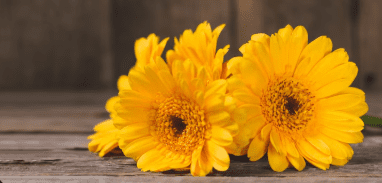
Calendula officinalis
Latin name: Calendula officinalis
Short name: Calen
Common name: Pot Marigold | Garden Marigold | Mary’s Gold | Common Marigold | Gold-bloom
Primary miasm: Psoric Secondary miasm(s): Acute
Kingdom: Plants
Family: Asteraceae
- Symptomatology
- Remedy Information
- Differentiation & Application
An annual herb native to southern Europe but widely cultivated in gardens for its bright orange-yellow flowers. Belonging to the Asteraceae (Compositae) family, Calendula is rich in carotenoids, flavonoids, and resins. The fresh flowering tops are used in homeopathic preparation, macerated in alcohol to produce the mother tincture.
Traditionally valued as a wound-healing plant for centuries — known as the “herbal surgeon.” Used in herbal medicine for cuts, abrasions, burns, ulcers, and skin inflammation; as an anti-inflammatory wash for conjunctivitis; and in culinary use for colouring and flavouring foods.
First homeopathic records by Hahnemann’s followers in the early 19th century; chiefly clinical remedy confirmed extensively by Hering and Clarke. Few true pathogenetic symptoms; the majority of its materia medica is based on clinical experience.
- Skin and soft tissues – Especially wounds, abrasions, burns, lacerations [Hering].
- Mucous membranes – Mouth, throat, genitals, urinary tract in ulceration or trauma.
- Glandular system – Local inflammation and suppuration prevention.
- Circulatory system – Promotes local healing by improving capillary circulation.
- Eyes – Injuries to eyelids and conjunctiva.
- Local application (mother tincture diluted in water) and internal administration combined [Clarke].
- Rest and protection of injured part.
- Warm applications in sluggish wounds.
- Cold, damp exposure to injured area.
- Secondary infection from neglected wounds.
- Motion of injured parts.
- Arnica montana – Closed injuries, bruises; Calendula for open wounds.
- Hypericum perforatum – Nerve-rich injuries; Calendula for general soft tissue repair.
- Staphysagria – Clean incised wounds with marked pain; Calendula more for prevention of suppuration.
- Bellis perennis – Deep tissue trauma; Calendula more superficial.
- Complementary: Hypericum, Bellis perennis, Silicea.
- Antidotes: Excessive suppuration may require Hepar sulph.
- Follows well: Arnica in cases where wounds open and require granulation stimulation.
Calendula is the great herbal surgeon of homeopathy — pure, clean, and vitalising. It prevents decay and corruption in wounds, fostering healthy tissue regeneration. It is less about pain relief than about ensuring that healing takes place naturally and without infection, guiding the body’s repair process.
- Use internally and externally for maximum effect.
- Ideal after surgical operations to prevent pus and speed recovery [Clarke].
- Beneficial for lacerated perineum after childbirth; add to sitz bath or use as a wash.
- Acts best in clean, open wounds — for bruised but unbroken skin, prefer Arnica.
Mind:
- Anxiety about recovery after injury.
- Irritability from wound pain.
Skin:
- Lacerations.
- Ulcerations.
- Burns.
- Wounds, open, slow healing.
Mouth:
- Ulcers, aphthae.
- Post-extraction healing.
Female:
- Lacerations after labour.
- Surgical wound healing.
Generalities:
- Promotes granulation.
- Prevents suppuration.
- Hering, C. – Guiding Symptoms: Wound-healing indications, prevention of suppuration.
- Clarke, J.H. – Dictionary of Practical Materia Medica: External and internal uses, surgical adjunct.
- Boericke, W. – Pocket Manual: Keynotes for lacerations and ulcerations.
- Allen, T.F. – Encyclopaedia: Fragmentary proving notes, wound applications.
- Hughes, R. – Manual of Pharmacodynamics: Mode of action on tissues.
- Farrington, E.A. – Clinical Materia Medica: Comparative notes with Arnica and Hypericum.
- Kent, J.T. – Lectures: Brief notes on surgical application.
- Boger, C.M. – Synoptic Key: Characteristic local healing sphere.
- Dewey, W.A. – Practical Therapeutics: Surgical and obstetric indications.
- Nash, E.B. – Leaders: Calendula’s place in wound care hierarchy.
